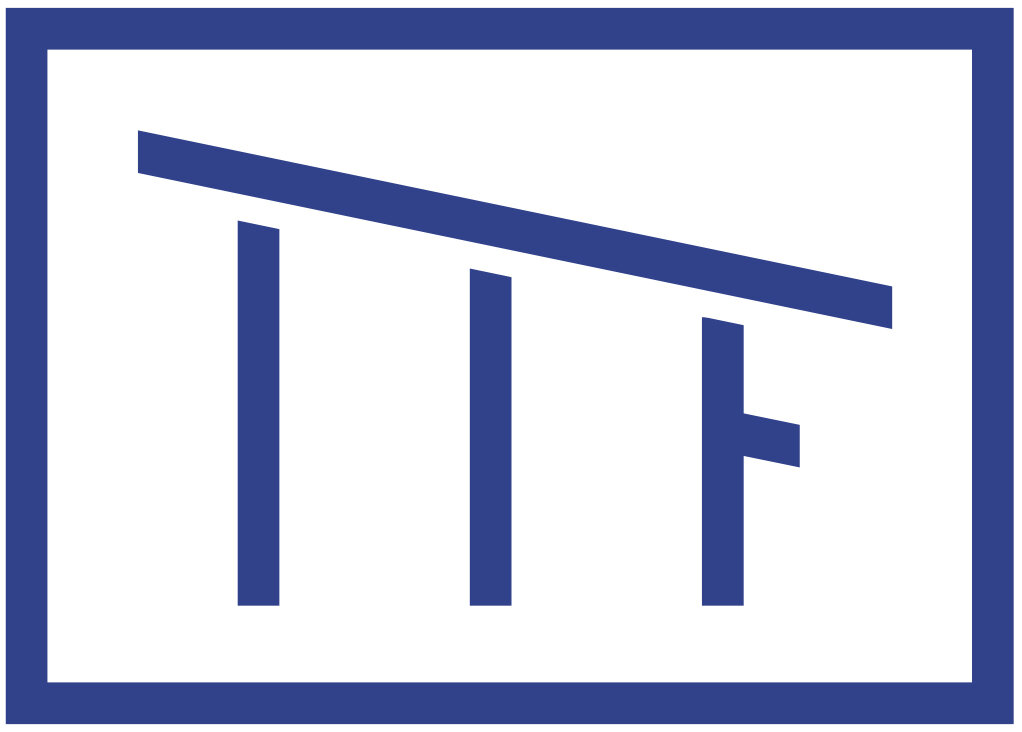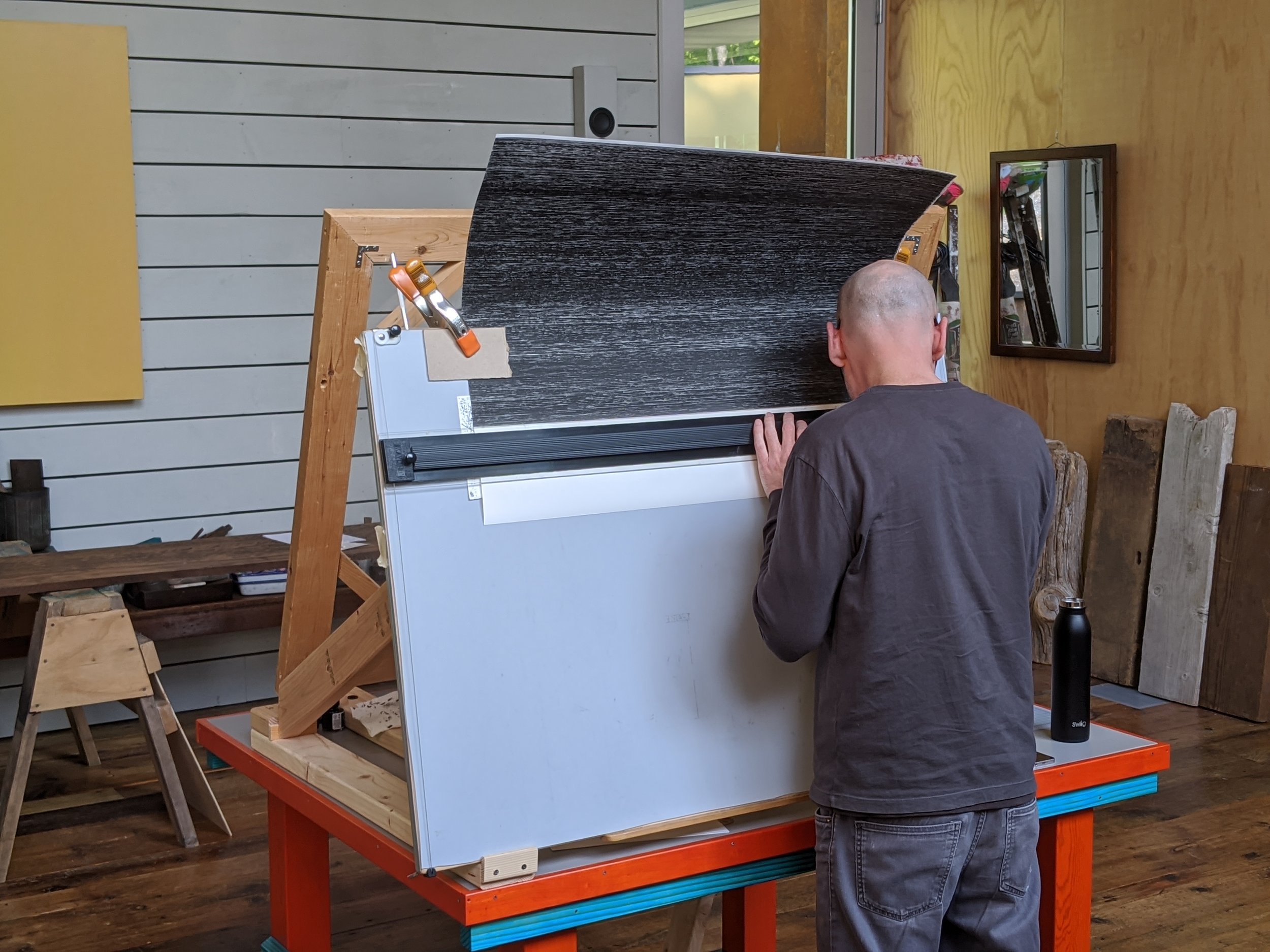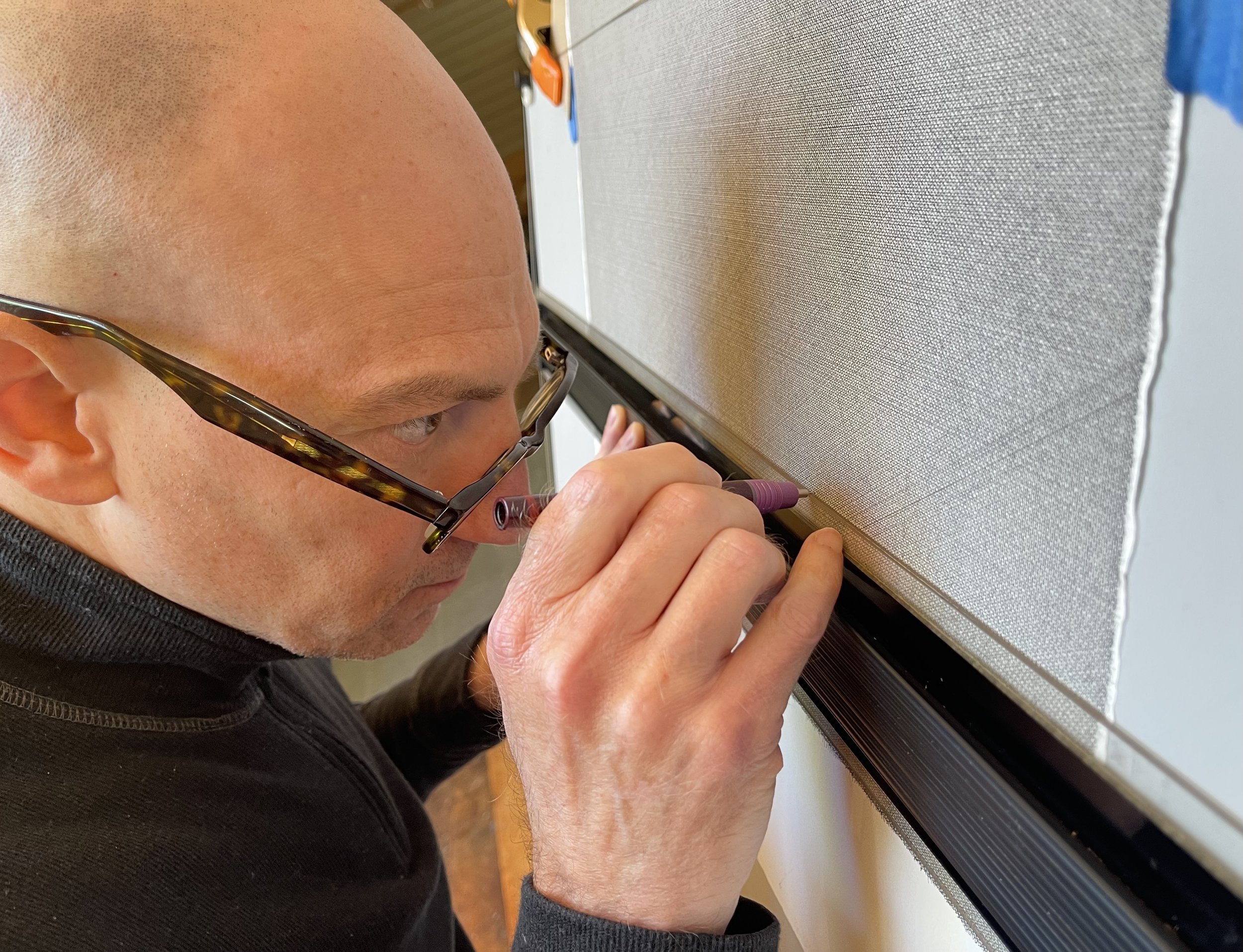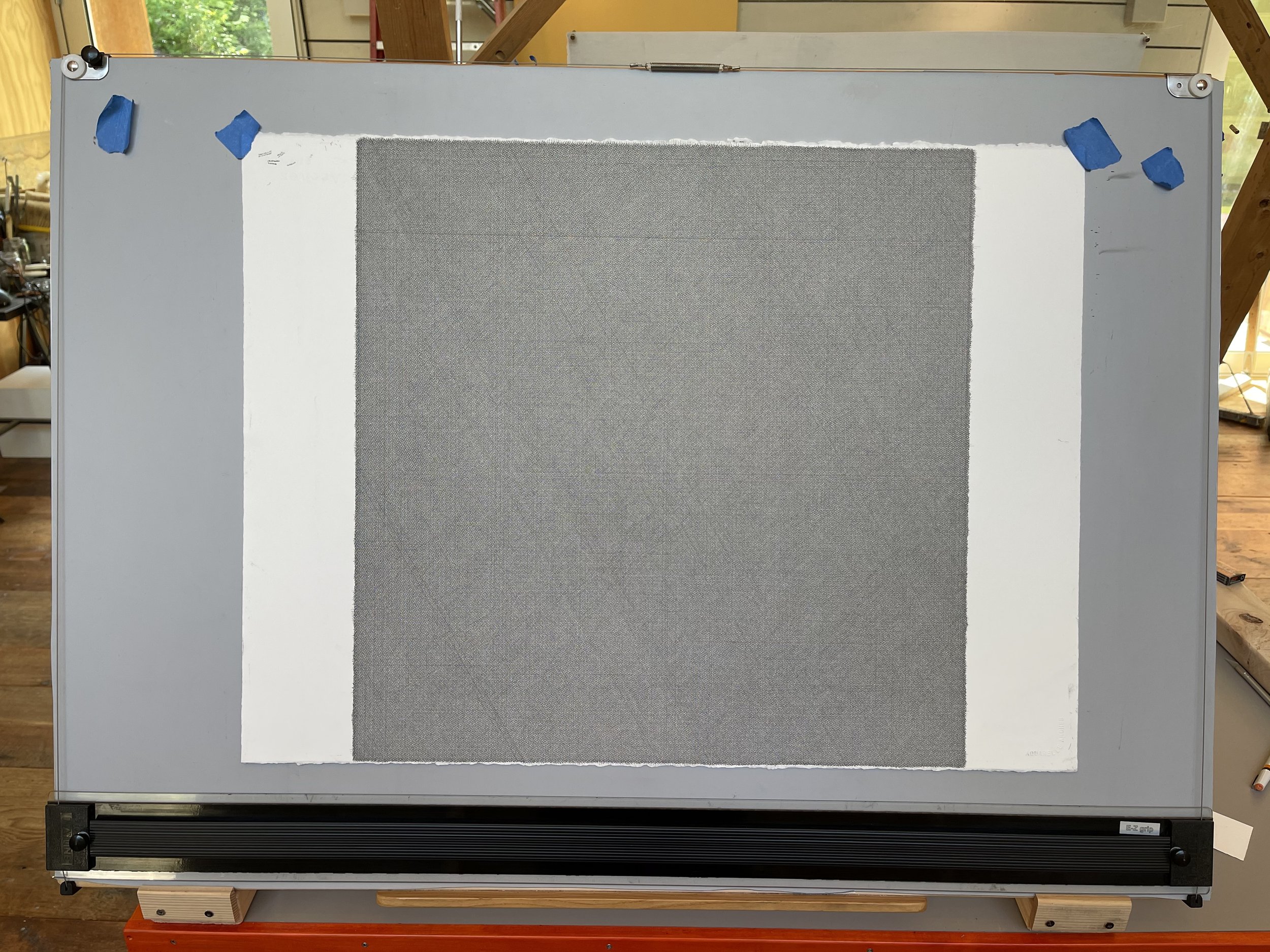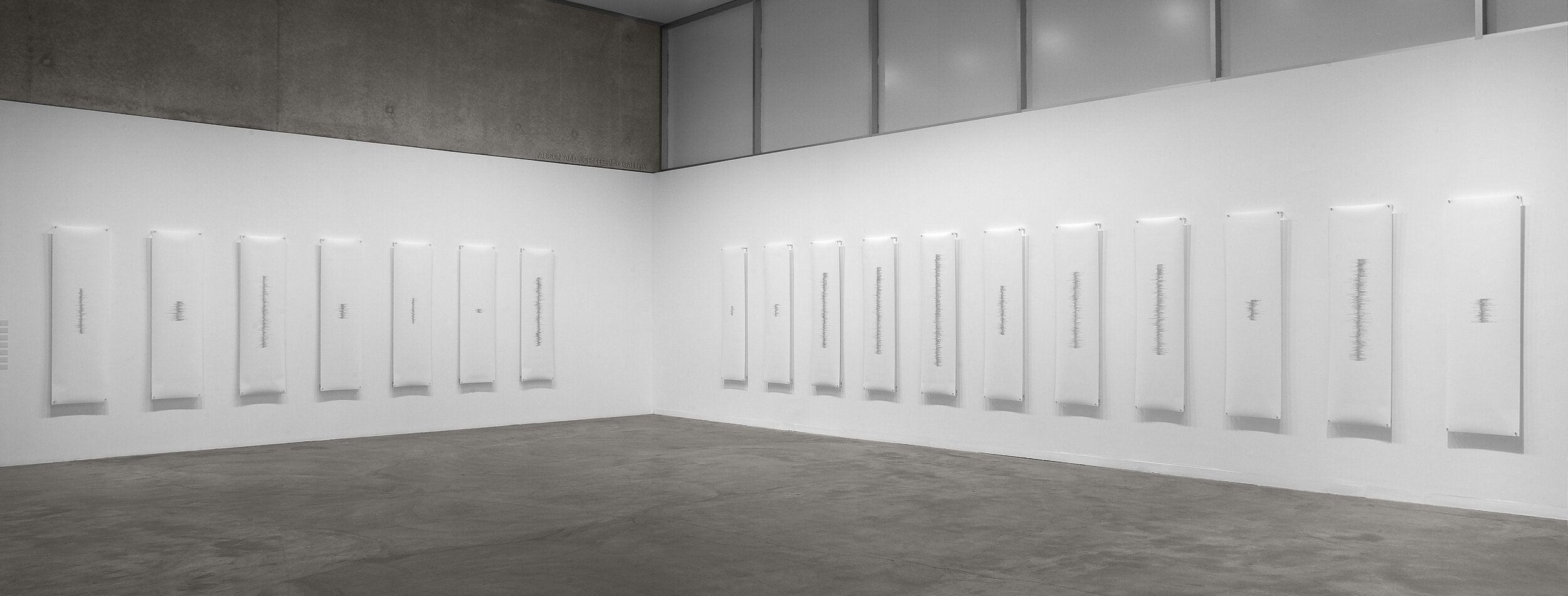Martin Brief
Photo by Ken Perrin
Born and raised in Chicago, Martin Brief is an artist who makes drawings that are imbued with a sense of time and labor. These drawings explore contemporary culture and are a meditative practice. Martin’s work has been exhibited in solo and group exhibitions nationally and internationally including exhibitions in New York, Paris, Zurich, Washington, D.C., Philadelphia, and Chicago. In addition, his work is in several public collections, including the Joan Flasch Artist Book Collection at the Art Institute of Chicago, Center for Creative Photography in Tucson, Arizona and the State Foundation on Culture and the Arts in Honolulu, Hawaii. He has received fellowships from the Howard Foundation and the MacDowell Colony. Martin currently lives and works in St. Louis and is a Professor at Saint Louis University.
Amazon God, 2010, ink on paper, 72” x 20”, Installation view (photo credit: Richard Sprengler)
The Origin and Fate of the Universe, from A Brief History of Time 2014–2015, ink on paper, 32.25” x 24.875”
Artist Statement
Throughout my career I have made art as a way to interrogate aspects of our complex social fabric. Topics have included, among other things, hope, the media, God, success, security, and the relationship between science and religion. Through my drawings I ask viewers to reconsider their relationship to these ideas and to examine how individually and collectively we construct our understanding of and belief in these subjects. For me, the gallery is a place to discuss ideas, disrupt patterns of belief, and plant seeds for social change. I create works that allow for thoughtful contemplation and open a space for reasoned dialogue.
Many of my drawings are made of small handwritten text but they are not strictly about language. In all of my projects I use language as a formal device and a conceptual access point. Text is a familiar vehicle for viewers to enter and engage with the main subject of the work. In drawings where I use very small text, (equivalent to 3 to 5 points) it is readable and the size allows the text to transform easily into abstract form. Simply by stepping a few feet away from the piece all of the words disappear and become a soft gray rectangle. In other works where the text is unreadable it instead acts as an armature or a point of departure for the final drawing. All of my works allude to how we can construct and deconstruct meaning and through this process begin to question and arrive at a deeper understanding about our assumptions and beliefs.
My works on paper are made slowly and meticulously over a long period of time. This labor-intensive process is fundamental to the conceptual and formal development of the projects. It references the meditative work of scribes and monks who only wrote the most important texts and their personal labor permeates their writings. My process allows me to direct a great deal of time and attention on the subject of the work. This quiet sustained focus can be seen in the work and is one of the reasons that these drawings provide a starting point for respectful and thoughtful conversation.
At Tusen Takk
Martin continued work on a project entitled System Failure (working title) and began to develop ideas for new work. For Martin, the solitude that Tusen Takk affords provided him some concentrated time to think, sketch, develop and plan new projects. He says: “This is the most difficult part of my practice and I’m at my best when I have periods of focused time. These times are rare and my time at Tusen Takk left me with some real momentum for future projects.”
#18, from Hope, 2017–2019, oil pastel on paper, 5.625” x 7.625”
Public Programs
Related News
